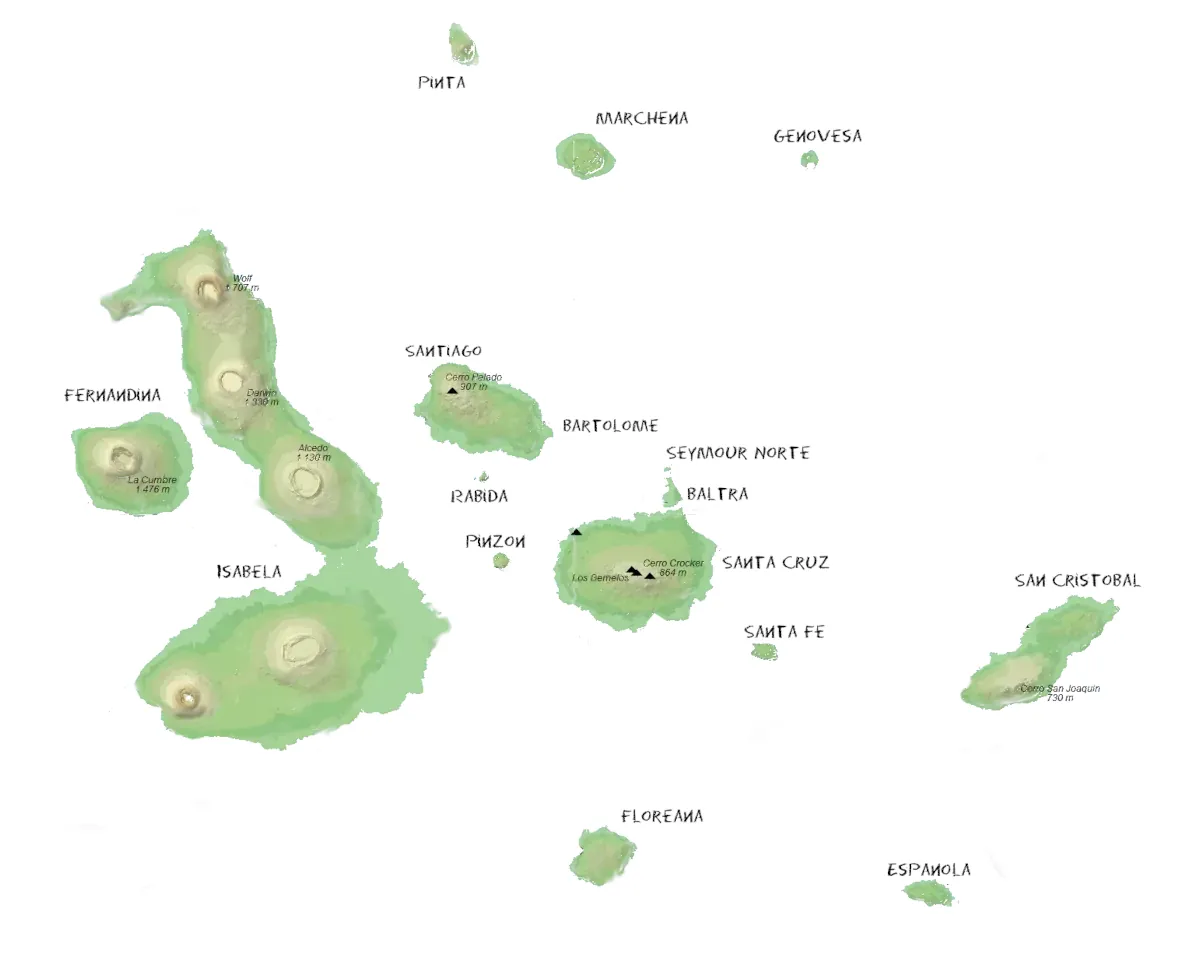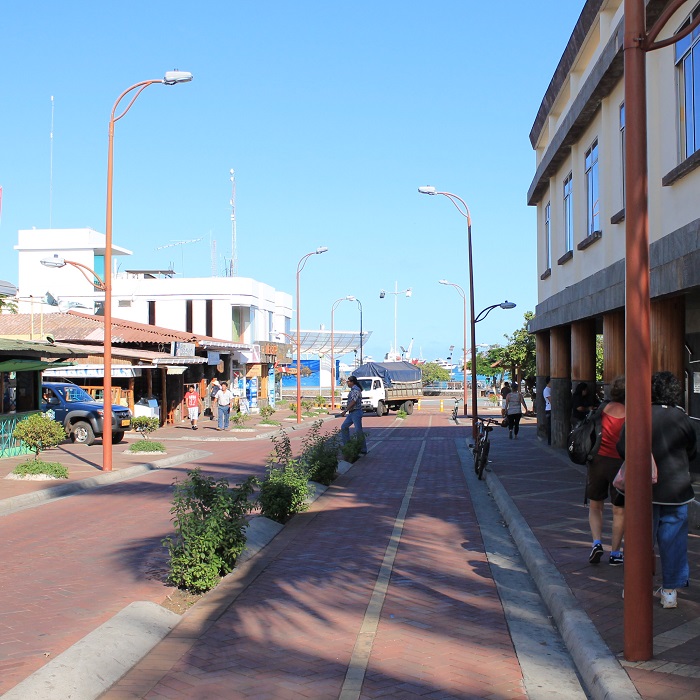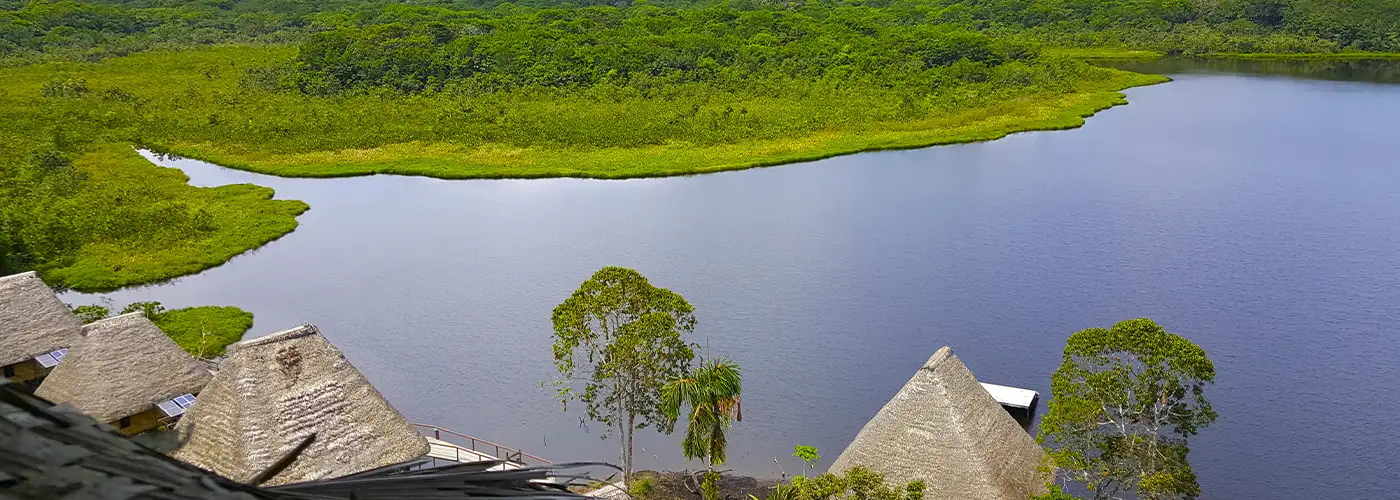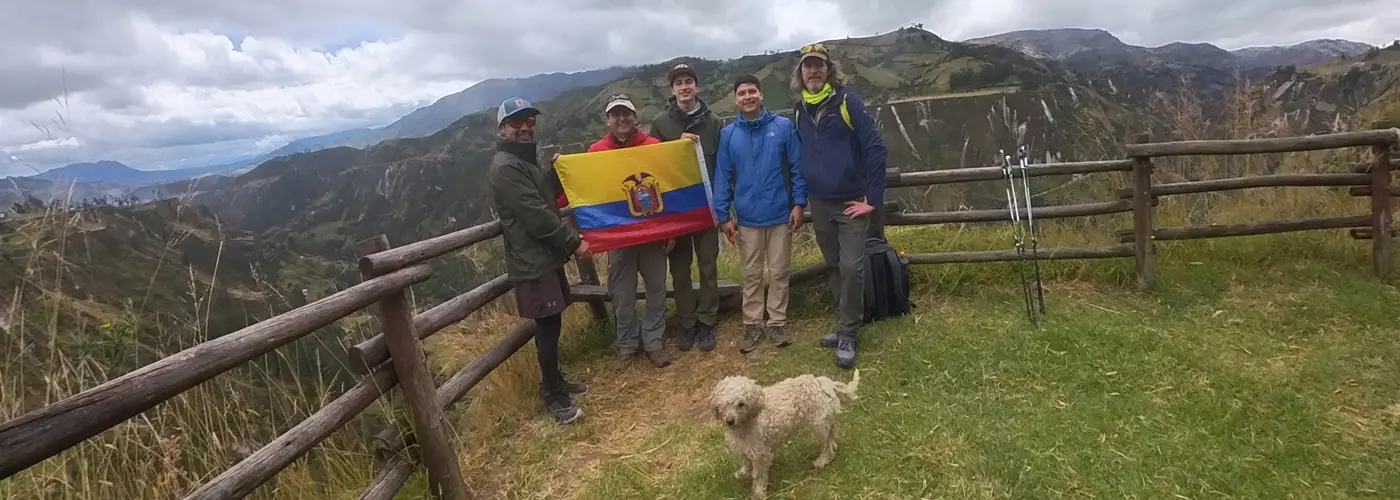Mapa y geografía de las Islas Galápagos

El archipiélago de Galápagos, situado a unos 1.000 km al oeste de Ecuador continental, está formado por más de 100 islas e islotes. Trece de ellas superan los 10 km², mientras que otras seis tienen entre 1 y 10 km². Sólo se pueden visitar 20 de las islas, la mayoría de las cuales sólo son accesibles a través de cruceros. La superficie total del archipiélago es de unos 8.000 km², y 59.500 km² del océano Pacífico forman parte de su territorio.
Las Galápagos son uno de los pocos grupos de islas situados tanto en el hemisferio norte como en el sur. Su accidentado paisaje está formado por coladas de lava seca, cráteres, acantilados y volcanes, muchos de los cuales siguen activos hoy en día. El punto más alto es el volcán Cerro Azul (1.689 m), en la isla Isabela. El clima es entre templado y cálido durante todo el año, con temperaturas medias de entre 21°C y 30°C. De diciembre a mayo es más cálido, mientras que de diciembre a mayo es más cálido. De diciembre a mayo es más cálido, mientras que de junio a noviembre es más fresco y seco.
Formación

Las islas Galápagos se formaron hace unos 5 millones de años debido a la actividad tectónica y volcánica del fondo oceánico. Situadas sobre la placa de Nazca, que se desplaza 7 cm al año hacia el continente, las erupciones submarinas de más de 2.000 cráteres provocaron el crecimiento de los volcanes sobre el nivel del mar. El proceso de actividad volcánica y movimiento de la placa continúa hoy en día, haciendo que las islas del sureste sean más antiguas. Geológicamente, las islas aún se consideran jóvenes, y la mayor actividad volcánica se produce en las más jóvenes, Isabela y Fernandina.
Asentamiento y población
Las pruebas arqueológicas sugieren que las islas fueron visitadas en la época precolombina, pero no está claro si estuvieron pobladas permanentemente. Oficialmente, las islas fueron descubiertas el 10 de marzo de 1535 por el obispo español Tomás de Berlanga, que las llamó Las Islas Encantadas. Piratas, balleneros y colonos ingleses las utilizaron como escondite o para cazar leones marinos y tortugas entre los siglos XVI y XIX. Ecuador se anexionó las islas en 1832, y en 1835 llegó el barco británico Beagle, con Charles Darwin a bordo. Sus estudios en las islas contribuyeron más tarde a su teoría de la evolución.

En la actualidad, sólo cinco islas están habitadas: Santa Cruz, San Cristóbal, Isabela, Floreana y Baltra, con una población total de unas 33.000 personas. Puerto Ayora, en Santa Cruz, es la ciudad más grande, mientras que Puerto Baquerizo Moreno, en San Cristóbal, es la capital.
Conservación

El Parque Nacional de Galápagos abarca 799.540 hectáreas. En 1959, el gobierno ecuatoriano declaró zona protegida el 97,5% de la masa continental de Galápagos, y en 1978, la UNESCO reconoció las islas como Patrimonio de la Humanidad. A pesar de los esfuerzos de conservación, surgieron conflictos con la creciente población local y la industria pesquera. La creación de la Reserva Marina de Galápagos en 1998 impuso estrictas normas de pesca, lo que contribuyó a estas tensiones. El turismo también aumentó, introduciendo especies invasoras. Para evitar que las islas perdieran su condición de Patrimonio de la Humanidad, el gobierno ecuatoriano las declaró zona de riesgo ecológico en 2007. Gracias a nuevas regulaciones, fueron retiradas de la lista de especies en peligro de la UNESCO en 2010.
En 2022, el Presidente de Ecuador firmó un decreto por el que se ampliaba la reserva marina en 60.000 km², con lo que la zona protegida alcanza los 198.000 km². Esta medida favorece las rutas migratorias de especies marinas en peligro de extinción.
En nuestro sitio web encontrará opciones de viaje para visitar las Galápagos, desde excursiones por las islas y cruceros hasta viajes por el Ecuador continental.




